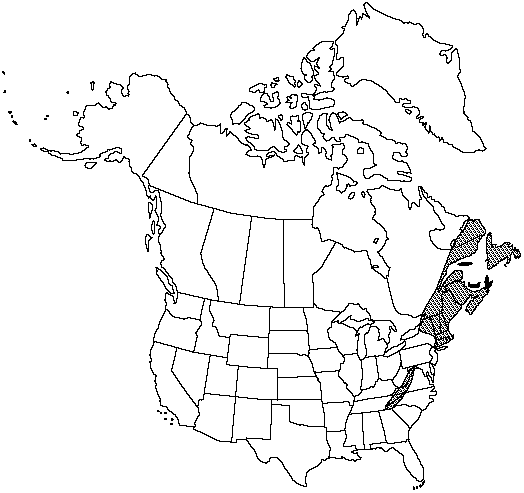Difference between revisions of "Dryopteris campyloptera"
Amer. Fern J. 20: 118. 1930.
FNA>Volume Importer |
FNA>Volume Importer |
||
| Line 62: | Line 62: | ||
|publication year=1930 | |publication year=1930 | ||
|special status= | |special status= | ||
| − | |source xml=https://jpend@bitbucket.org/aafc-mbb/fna-data-curation.git/src/ | + | |source xml=https://jpend@bitbucket.org/aafc-mbb/fna-data-curation.git/src/f50eec43f223ca0e34566be0b046453a0960e173/coarse_grained_fna_xml/V2/V2_79.xml |
|genus=Dryopteris | |genus=Dryopteris | ||
|species=Dryopteris campyloptera | |species=Dryopteris campyloptera | ||
Revision as of 20:53, 16 December 2019
Leaves monomorphic, dying back in winter, 25–90 × 15–30 cm. Petiole 1/3 length of leaf, scaly at least at base; scales scattered, brown, sometimes with darker patch at base. Blade light green, deltate-ovate, 3-pinnate-pinnatifid, herbaceous, not glandular. Pinnae in plane of blade, lanceolate; basal pinnae deltate to broadly lanceolate, not reduced, basal pinnules equal to adjacent pinnules, basal basiscopic pinnule much longer and 2 times width of basal acroscopic pinnule (only in this species); pinnule margins toothed, teeth spine-tipped. Sori midway between midvein and margin of segments. Indusia usually lacking glands. 2n = 164.
Habitat: Cool, moist woods at increasing elevation southward, frequently only at summits of mountains
Elevation: 0–1500 m
Distribution

N.B., Nfld., N.S., P.E.I., Que., Conn., Maine, Md., Mass., N.H., N.Y., N.C., R.I., Tenn., Vt., Va., W.Va.
Discussion
Selected References
None.